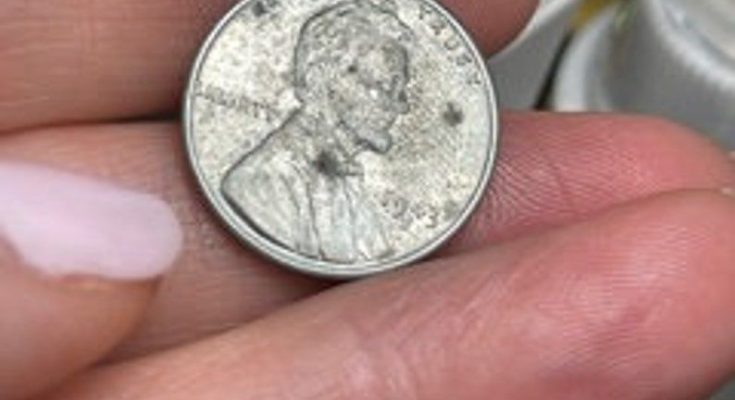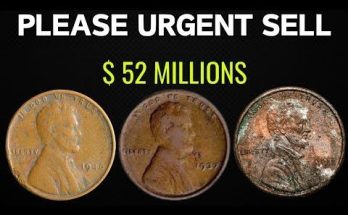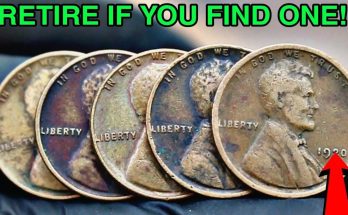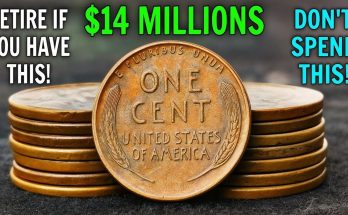The photograph captures a moment of numismatic fascination, a close-up shot of a coin that tells a unique story of American history and wartime necessity. Held carefully between two fingers, the coin in question is a 1943 Lincoln Wheat Penny, but with a crucial and distinctive difference—it is made of steel. The image’s caption, “Rare 1943 Steel MAGNETIC Wheat Penny,” immediately highlights its most significant features, drawing the viewer’s attention to its metallic composition and its historical context.
The coin itself, despite its age, appears to be in relatively good condition, though it shows the expected signs of circulation and the passage of over eight decades. Its surface is a light, silvery-gray, a stark contrast to the familiar copper-brown of nearly every other Lincoln cent. This unique color is the direct result of its steel composition, a consequence of the exigencies of World War II. The coin’s obverse, or front side, is dominated by the iconic profile of Abraham Lincoln, facing right. The details of his face, though slightly worn, are still clearly discernible. Above his head, the national motto “IN GOD WE TRUST” arches, and to his left, the word “LIBERTY” is inscribed. The date, “1943,” is prominently displayed on the right side of the coin, just below Lincoln’s chin. The clarity of the date is a key feature, as it confirms the coin’s specific and historically significant year of mintage.
The story behind the 1943 steel penny is a fascinating chapter in the history of U.S. coinage. By 1943, the United States was deeply embroiled in World War II, and the war effort had created a critical need for copper. Copper, a vital metal for ammunition casings, telephone wires, and countless other military applications, was in high demand. To conserve this essential resource, the U.S. Treasury Department made the unprecedented decision to mint the one-cent coin from a different material. After experimenting with various metals, they settled on low-carbon steel, which was then coated with a thin layer of zinc to prevent corrosion. This decision was a direct response to the call for national sacrifice and resource management during a time of immense global conflict.
The resulting coins, millions of them, were unlike anything the public had seen before. Their pale color and distinctive “clink” when dropped were a constant reminder of the nation’s wartime footing. Furthermore, as the caption rightly points out, these coins were magnetic, a quality that copper pennies do not possess. This magnetic property is a simple but effective way for collectors and enthusiasts to authenticate a 1943 steel penny, setting it apart from other Lincoln cents that might have been subjected to post-mint color changes.
The rarity of this particular coin is not due to low mintage numbers—in fact, hundreds of millions were produced—but rather due to its singular year of production and the widespread confusion they initially caused. Many people mistook them for dimes or other silver coins, and their unusual appearance led some to hoard them while others spent them with little thought. Over the decades, many of these coins have been lost, damaged, or discarded. Finding one in good condition, as depicted in the photograph, is a special event for any collector.
The image also provides a human element, showing the coin held in a hand. The detail of the polished fingernails and the gentle, careful grip conveys a sense of reverence for the object. This is not just a piece of metal; it is a tangible piece of history, a memento from a time when an entire nation rallied behind a cause, even changing the very composition of its currency to support the war effort. For a coin collector, this 1943 steel penny represents a unique intersection of monetary policy, metallurgy, and global conflict. It stands as a physical artifact of a pivotal moment in American history, making it a highly sought-after and cherished item in the world of numismatics. The photograph, therefore, serves not only to document the coin’s physical attributes but also to celebrate its enduring legacy and historical significance.



